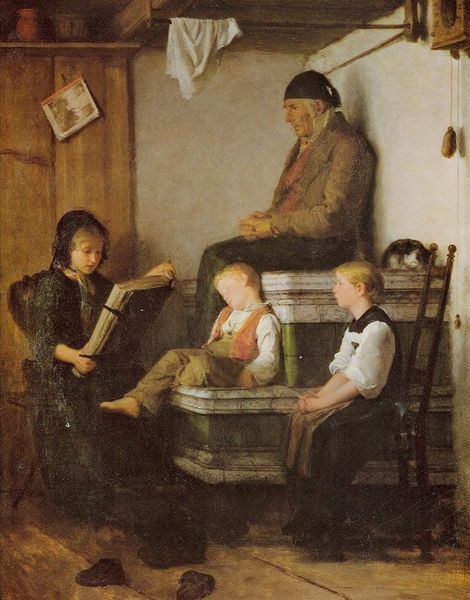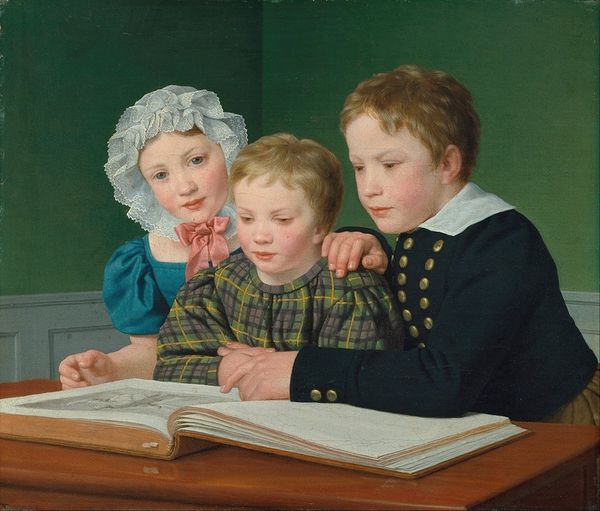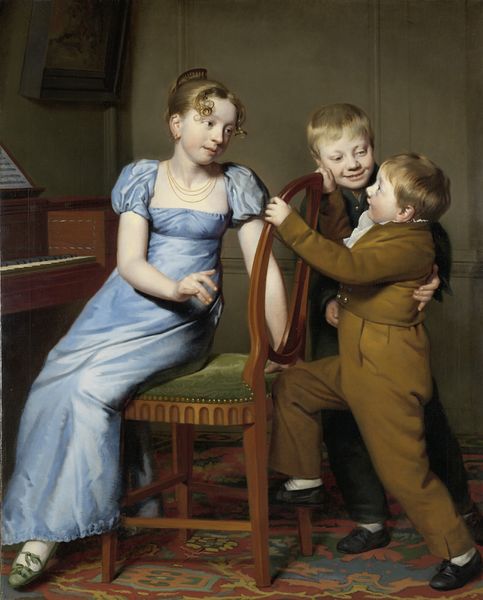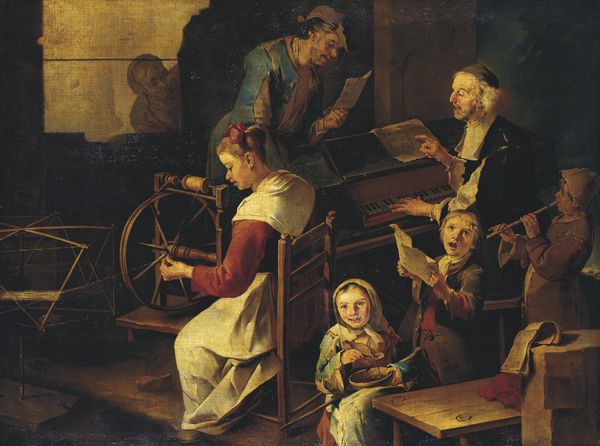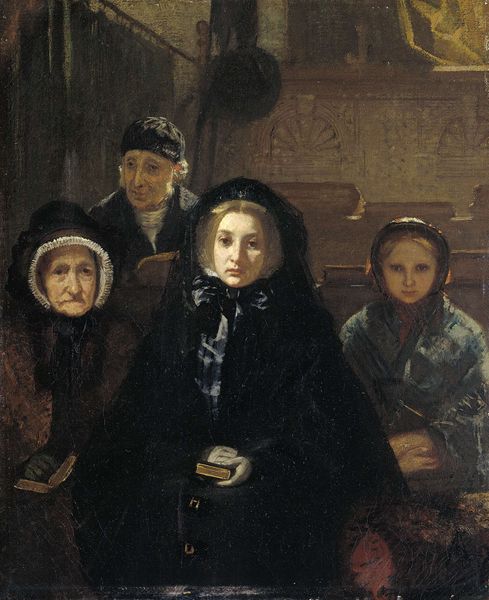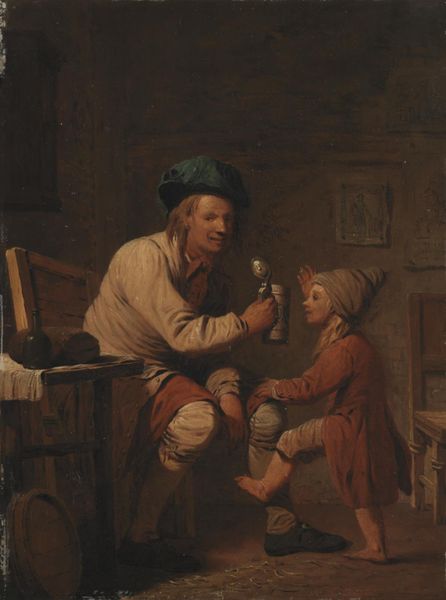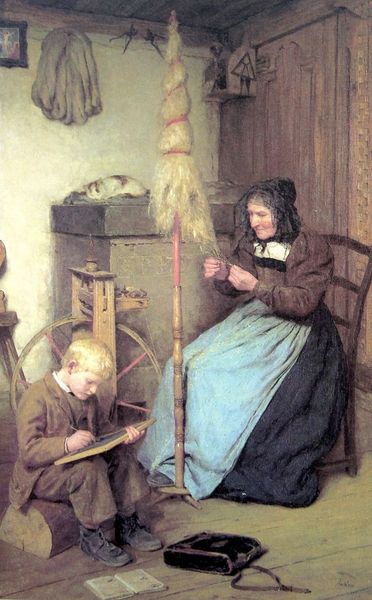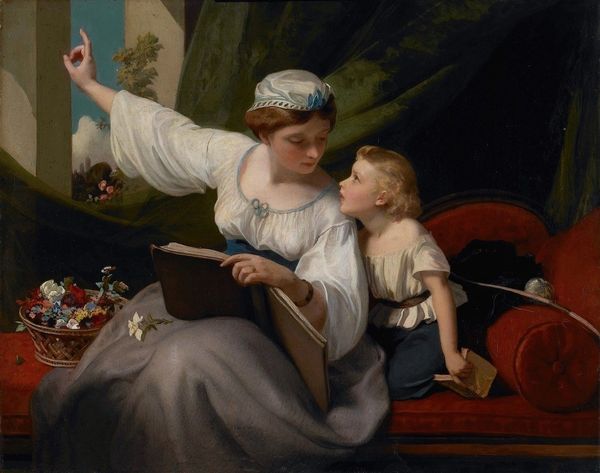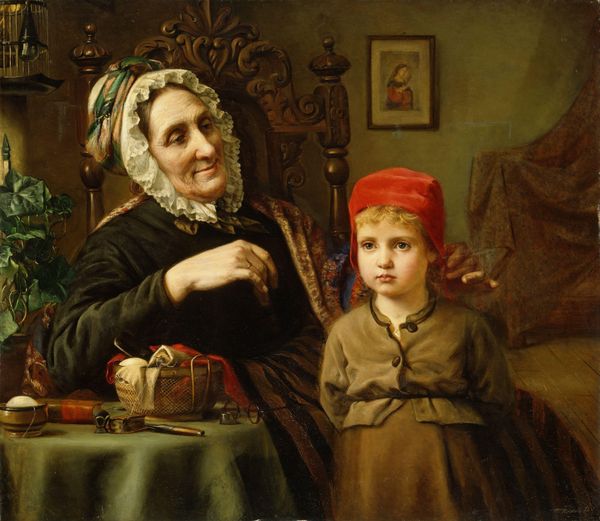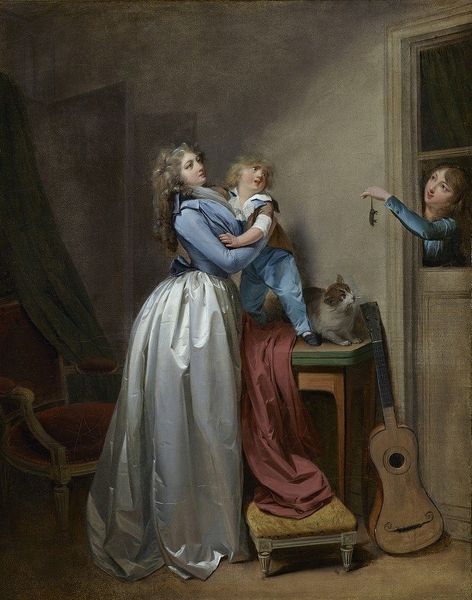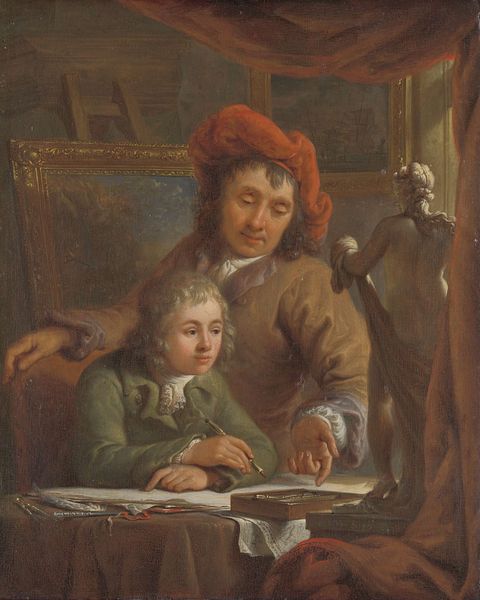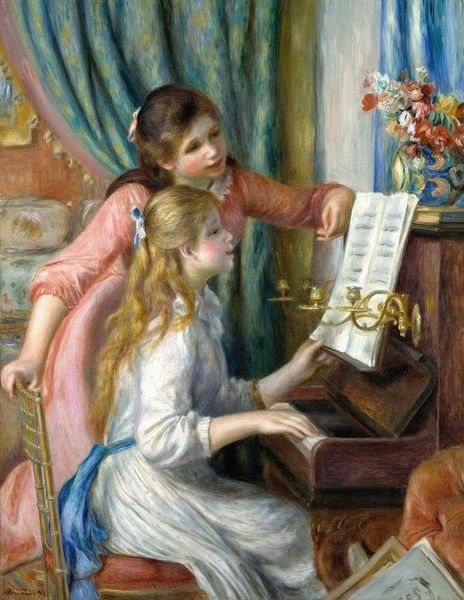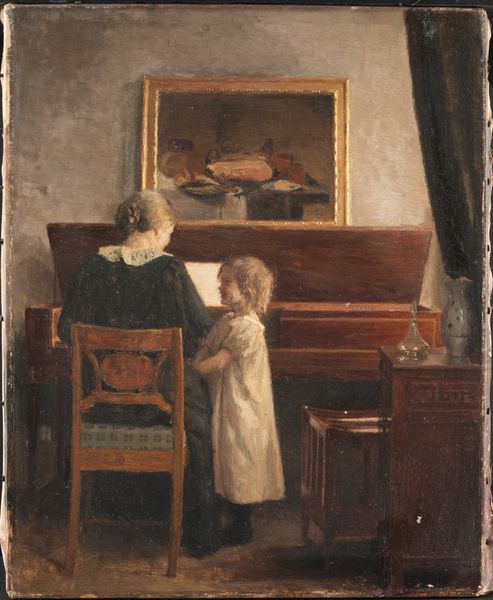
Copyright: Public domain
Curator: Alright, let's gather around "The Exiles" by Albrecht Anker, created in 1868 using oil paint. A somber scene unfolds before us. Editor: My first impression is...wistful. There's something deeply touching and slightly melancholy about it, wouldn't you say? Like a forgotten lullaby. Curator: I agree. Anker, you know, often depicted scenes of everyday life in rural Switzerland, yet this piece feels charged with unspoken stories. One might interpret that the older man's pained expression is related to the family playing music. Editor: Perhaps this music session is a kind of defiance? Or resilience? Here are three people—a young boy, a young woman, an older gentleman—at a piano. But Anker uses shadows so masterfully, shrouding parts of their faces. Do we call them ‘exiles’ because they’ve been cast out from somewhere, or because they're exiled within themselves, by some personal sorrow? Curator: Good questions, because socio-historically speaking, the concept of "exile" was a very live and traumatic one across Europe at this time. While Anker paints Swiss villagers here, not explicitly figures from contemporary international politics, his audiences certainly would have found relevance through that common and recent memory. And art patronage in Switzerland often meant serving a diaspora, both the directly political diasporas and religious minorities, for example. Editor: The little boy seems so innocent, oblivious to the weight of whatever troubles his elders. The young woman gazes outward, almost hopeful, though it is tinged with apprehension, don't you think? Curator: Exactly, Anker uses their youthful countenances to play with time and duration—it seems he has composed the figures into their position to tell the story, rather than recording a scene. Also, Anker's work reflects a tension: idealizing rural life while subtly acknowledging its hardships. Editor: That’s it. So the 'exile' is not just geographical or political, but perhaps an exile from a past idyll. I notice how lovingly he renders the wood of the piano, giving it such depth and weight in contrast with the somber clothing the characters are wearing. It has this rich, almost chocolate-y color, right? Curator: The artist really does invite us to consider both social circumstances and intimate individual responses. Thank you. I am intrigued and provoked. Editor: And for me, Anker offers an invitation into the quieter corners of the heart. It is as delicate as it is strong, a beautiful thing to behold.
Comments
No comments
Be the first to comment and join the conversation on the ultimate creative platform.
